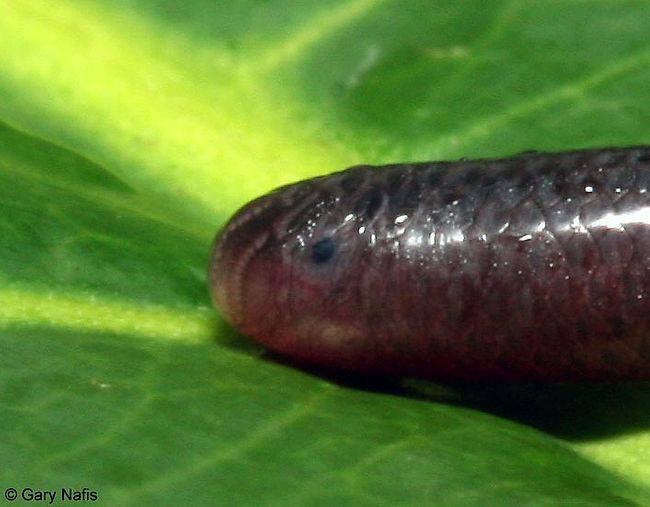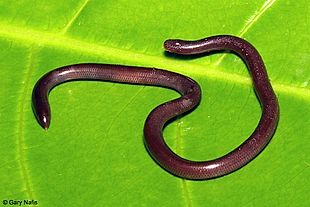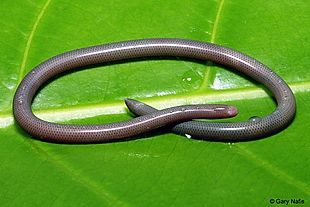Indotyphlops braminus
Brahminy Blind Snake
盲 蛇, 鉤盲蛇 (mang2she2)
Status: Not Protected
Non-venomous
Videos
More Photos
Family
Max. length
18 cm
Occurrence in Taiwan
Throughout Taiwan and offshore islands, up to 500 m.
Global Distribution
Wordwide; Saudi Arabia, Oman, Egypt, Libya, Kuwait, Zanzibar, Tanzania, Mozambique, Somalia, Cameroon, Benin, Togo, Ivory Coast, Senegal, Mauritania, Gabon, Central African Republic, Madagascar, Comores (Mayotte, Mohéli, Anjouan), Nossi Be, Mascarenes, Seychelles, Mauritius, Reunion, Rodrigues, Vietnam, Laos, Thailand, Myanma, Cambodia, Malaysia (Pulau Tioman, Johor: Pulau Sibu), Indonesia (Sulawesi, Komodo), Solomon Islands, South China (Hainan, Guangdong, Guangxi, Fujian, Guizhou, Hunan, Hubei, Jiangxi, Sichuan, Yunnan, Zhejiang), Taiwan, Japan (Ryukyu islands, incl. Senkaku), India (Maharashtra, Arunachal Pradesh), Andaman Islands, Nicobar Islands, Sri Lanka, Pakistan, Nepal, Philippines (Palawan: Calamian Islands, Panay, Luzon etc.), New Guinea, Nauru, Australia (Cook Islands, CKI, Northern Territory), New Caledonia, Japan, Mexico (introduced), Guatemala (introduced), Belize, USA (introduced to Florida and Hawaii), West Indies, Grand Cayman Islands, St. Martin, St. Barthélmy
Description
Very small snake; total length up to about 18 cm. It has no large ventral shields; there are 20 rows of smooth, shiny, and similarly sized scales all around body. Head is short and indistinct; body is moderately long; tail is quite short and ends in a spine. Eye is minute, poorly developed, appears as black pigmented spot on upper head, covered by head scales. Tongue is dirty white, almost colorless. Whole body is nearly uniform in color, brown to black dorsally but somewhat lighter ventrally, and turns into whitish-blue before ecdysis. The scales are darkened by deposits of very fine black pigment on margins. The labials, chin plates, anal region, and tip of tail are usually pale.
Biology & Ecology
These tiny Southeast Asian snakes look like dark, shiny earthworms and have successfully colonized many subtropical and tropical regions as a stowaway in the soil of nursery plants. They are fantastic colonizers, due in large part to the fact that they are perhaps the world's only entirely parthenogenetic snake species: they are all females, and reproduce asexually, so it only takes one to start a colony.
I. braminus is designed for life underground but it is equally able above ground and in water. During heavy rains it usually ascends to ground level after its subterranean air supplies become disrupted. It may be found in leaf litter, under dead wood and under stones but often when encountered it is passed off as an earthworm. Once exposed it will attempt to anchor itself to the ground with its spine and wiggle violently. Occasionally it may drive the point at the end of its tail into its captor's flesh, inflicting a stinging but harmless prick.
This snake feeds on ants, insect larvae and beetles. Very little is known about its hunting techniques, and it appears to be an opportunistic feeder. In turn, it is preyed upon by a multitude of other larger creatures - mostly birds, large frogs, reptiles and other snakes.
R. braminus' breeding habits are unique among snakes due to the fact that this species is parthenogenetic (i.e. capable of reproducing without male intervention). It is also oviparous, but little of its reproductive behavior has been studied. Gravid females are often found between April and July. Clutch sizes vary from 2 to 7; the tiny eggs measure 13mm x 4mm.
Etymology
Indotyphlops: from the Greek typhlops, which means blind, indo refers to the Indian or Indonesian distribution.
braminus = Latinized form of the word "Brahmin", a Hindu caste.
The Chinese name 盲蛇 or 鉤盲蛇 (mang2she2 or gou1mang2she2) means "blind snake" or "hooked/curved blind snake", the latter referring to the genus name (see above).
Further Info


























